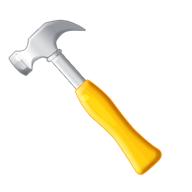1 min read
Is Your Shop Floor Hammering to Make It Fit?
Most manufacturers know quality and efficiency would suffer if they asked their shop floor to use the wrong tool, but all too often that’s what...
3 min read
David Oeters : May 19, 2014 at 9:38 AM

It sounds like a scene from a science fiction movie – a shop floor worker wanders a warehouse or production area. He wears a device over his eyes, and everywhere he looks data scrolls before his eyes. The temperature of a machine appears in a graphic. An arrow points in the direction of the material he is looking for, while a red warning sign flashes over a danger on the floor.
It’s known as augmented reality – using technology and computer-generated sensory input to enhance the user’s view of the real world. With Augmented Reality, technology works to enhance our current perception of reality.
 The Reality of Augmented Reality Within Manufacturing
The Reality of Augmented Reality Within ManufacturingBut it’s not science fiction. With Google glass and similar devices it is a reality. Technologists are already studying how Augmented Reality will shape the future. A recent article (Could augmented reality make work easier?) by BBC News details how a mock- up shop floor in Munich, Germany, is experimenting with Google Glass to determine how augmented reality could improve production, eliminate errors, and aid the shop floor in their daily tasks.
According to the article, the system uses a combination of Google Glass and software so workers can “see” (through Google glass) where items need to be collected or stored without referencing a clipboard or another device. Workers aren’t confused or lost as they search for materials. Service managers are provided step by step instructions on fixing broken equipment – presumably overlaying the instructions on the broken equipment leaving both hands free for the work. Data collection can be completed with a glance (literally) as the necessary data is collected by Google and recorded as needed.
At this point, the benefits to manufacturing are obvious. Non-value added work is eliminated from the shop floor. Workers have information sent directly to their eyes, leaving their hands free. Productivity increases, and data collection is streamlined.
This is not to say there aren’t challenges to the technology. Right now, setting up the system is very expensive and difficult, and with current battery usage, users have only 15 minutes before a recharge is needed. However, the promise of the technology is there, and it’s coming. The only question is when an executive or shop floor manager is going to ask what work you’ve done to research Augmented Reality.
One important step to preparing for Augmented Reality is to study your current systems that manage shop floor information. Successful modern manufacturing requires effective information management. Consider this… a review of the characteristics found on the most successful shop floors, such as complete as-built reports, material genealogy, process enforcement, and data collection, there is a focus on information management. You need to get the right information to the right people at the right time in a way that eliminates complexity and maximizes efficiency. You also need to collect data on what is happening at each work station. Effective information management is a primary benefit of paperless manufacturing and MES. Paper-based records and work plans are inefficient and are largely unsuited for modern manufacturing. Paper is error-prone and holds back a shop floor from achieving effective production.
Consider more than just the status of your work plans and records, but how information is collected from the shop floor. Can you efficiently collect data? Do you have access to real-time production information? How will you train employees in using the new system, and do you have reliable process enforcement to maximize the benefit of new technology? You need more than just devices and work plans on PDF to operate efficiently, you need an information support system in place. Consider what you currently have in place, and the role augmented reality will play in your shop floor processes sometime in the future. Paperless solutions have already proven to reduce errors through process enforcement and continuous quality management. They provide continuous monitoring and reporting of detailed shop floor work on visual dashboards, an important first step in sending information to mobile devices – a critical first step in providing augmented reality for your shop floor.
While many companies still struggle with paper-bound build books and excel spreadsheet work instructions, developers are already working on Augmented Reality Apps for Equipment Manufacturers. These iPad and Android apps, which provide a foundation for augmented reality beyond Google glass, deliver enhanced training, walk through work instructions for assembly, and more. The foundation for Augmented Reality is being installed in companies today so the future is coming sooner than you think.
It’s an exciting application of modern technology for manufacturing, but it will ask a lot of IT (sorry!). Most shop floors aren’t ready to roll over to augmented reality operations. Take a moment to evaluate your current operations, and consider what you can do to prepare for the future of manufacturing.

1 min read
Most manufacturers know quality and efficiency would suffer if they asked their shop floor to use the wrong tool, but all too often that’s what...

1 min read
Conducting a Pilot Program for your MES or Paperless Manufacturing system won’t guarantee project success, but there are clear benefits for the savvy...

Many times, a solution is much closer than you might think. By David Oeters, Corporate Communications with CIMx Software Face it, in an era when shop...